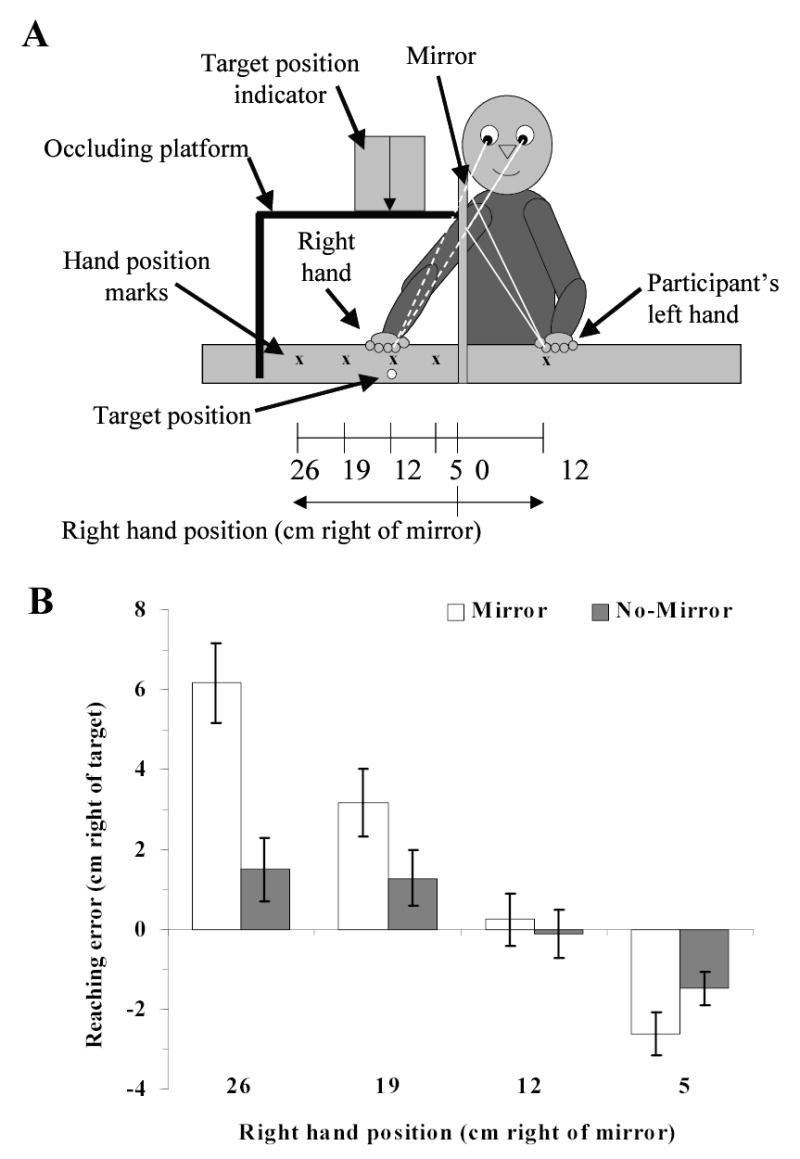Figure 1.

Experimental apparatus and results of Experiment 1. Panel A. The participant sat at a table, with a mirror positioned vertically in the centre, and an occluding platform to the participant’s right. The participant’s right hand was placed by the experimenter on one of the four hand positions marked on the table. The right arm and hand was never visible to the participant during the experiment, while the left arm and hand was visible directly in both conditions, and via the mirror reflection in the Mirror condition. When the right hand was positioned 12 cm to the right of the mirror, the mirror reflection of the left hand appeared to be in the same position as the true location of the right hand (as shown in the figure – solid and broken white lines show the approximate line of sight, via the mirror reflection, of the left hand). In all other right hand positions (5, 19, & 26 cm), the apparent visual appearance of the right hand (really the mirror-reflected left hand) was mismatched with respect to the true position of the right hand. After tapping the fingers of both hands synchronously, and experiencing the ‘mirror illusion’ (the feeling that one can see through the mirror to observe one’s right hand directly), participants reached with their right index finger to the position on the table where they judged the target position indicator line would meet the table (i.e., 12 cm to the right of the mirror, and 45 cm in front of the participant). Panel B. The bars show the mean (± standard error) of mean reaching errors across participants, separately for both conditions and the four arm positions. Open bars – Mirror condition; Filled bars – No-Mirror condition; x-axis – distance of right index finger from the mirror before reaching; y-axis – mean reaching error (measured in cm to the right of the target).
